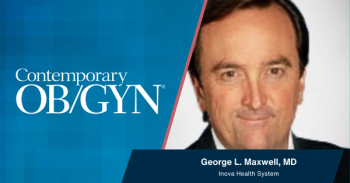
Is ultrasound the visual stethoscope that will change the ob/gyn world?
Ultrasound could replace the stethoscope in ob/gyn, says this doctor who trains practitioners in the developing world.
Dr Hanson is an ISUOG Ambassador, Co-Founder of
Invented nearly 200 years ago by French physician René Laennec, the stethoscope quickly replaced direct auscultation. It was inexpensive to manufacture, easy to use, and portable-a perfect example of disruptive technology that ushered in a new era in medicine in which a noninvasive, non-lethal instrument was used to diagnose disease. The stethoscope subsequently underwent several modifying improvements, the most recent of which was the development earlier this year of a low-cost, high-quality 3D-printed version. (See “Gazan medico team 3D-prints world-leading stethoscope for 30c”:
In ob/gyn, I believe that ultrasound has the potential to replace the stethoscope. First applied in medicine 70 years ago and with broad relevancy across multiple specialties, ultrasound has already replaced portions of the traditional diagnostic clinical exam. In ob/gyn, it is used to assess pelvic adequacy and labor progress and to conclusively determine fetal position. Adnexal masses are indisputably best diagnosed with transvaginal ultrasound.
Ultrasound has applications in other specialties, too. In cardiology, transesophageal ultrasound is used to evaluate heart function and in trauma medicine, patients are evaluated with the FAST exam (Focused Assessment with Sonography for Trauma). Astronauts also use the technology to assess fractures, which are prevalent in space. Doppler and 3D/4D ultrasound allows us to hear and see more than senses or stethoscopes alone can comprehend. Therapeutic uses of ultrasound include lithotripsy, uterine fibroid ablation, and treatment of tendonitis and bursitis. Simulation and robotics are active areas of investigation for training and delivery of services.
The advantages of ultrasound include portability, relatively low cost compared to other imaging options, lack of radiation exposure, and ability to see soft tissue as well as bone. It is not, however, risk free. Attention to safety by reducing negative bioeffects is paramount. (See the ISUOG safety statement at
Ultrasound’s learning curve demands intense and continued training to ensure proficiency. It is not surprising that at many medical institutions, ultrasound training is part of the anatomy and physical exam core curriculum.
In the developing world, where I do ultrasound training, access to the technology for every mother has the potential to significantly reduce maternal mortality, a leading cause of death globally. Ectopic pregnancy, fetal malpresentation, multiple pregnancies, and placenta previa are just a few examples of diagnoses trainees are making that allow intervention and improved maternal and infant outcomes.
For maximum leveraged impact, the tool needs to be placed in the hands of a skilled provider. ISUOG Outreach trainees in Haiti are a model of successful training. But we need appreciably less-expensive point-of-care machines that have simple controls, service contracts, innovative, long-lasting energy sources, and are robust, as 95% of donated instruments do not last 5 years in the developing world. Limiting training and market development in stable “investment-worthy” countries excludes those who would benefit from this technology and training the most.
We still need Leopold’s maneuvers, clinical pelvimetry, and proficiency in performing a comprehensive pelvic exam but ultrasound is already changing the world for ob/gyns and their patients around the globe.
Newsletter
Get the latest clinical updates, case studies, and expert commentary in obstetric and gynecologic care. Sign up now to stay informed.










